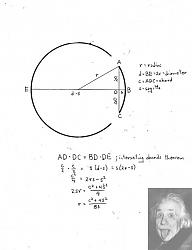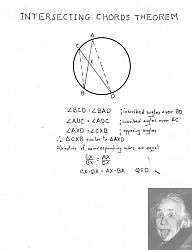The problem with CAD, and programs like it, is the fact that, while you can solve a particular problem, you learn nothing about math from it.
Mathematics is learned in a progression; each field builds on what was learned in the previous. Back when the schools actually taught useful material rather than woke psycho babble, the progression looked like
arithmetic
algebra
geometry
trigonometry
analytic geometry
calculus
advanced specialties, e.g. probability, statistics, matrix algebra, etc.
Once you introduce a tool like CAD, you eliminate the algebra and problem solving practice that you would get by following this progression.



 LinkBack URL
LinkBack URL About LinkBacks
About LinkBacks



 Reply With Quote
Reply With Quote





Bookmarks